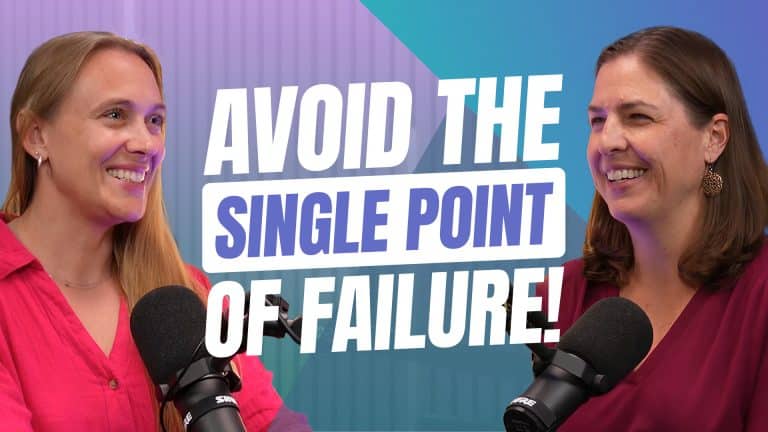Table of Contents
Nevada probate law just got a major update. Governor Lombardo signed SB 404 in June 2025, changing how estates move through the probate system starting October 1, 2025.
The changes raise threshold limits across three types of probate proceedings. If you’re dealing with an estate that’s close to these old limits, the new thresholds could save months of court proceedings and thousands in legal fees.
What SB 404 Changes (The Quick Version)
Three probate thresholds jumped substantially:
Affidavit of Entitlement went from $100,000 to $150,000 for married individuals with surviving spouses. This is a 50% increase that lets more estates skip probate entirely.
Set Aside increased from $100,000 to $150,000. Same 50% jump, different probate type.
Summary Administration rose from $300,000 to $500,000. This $200,000 increase matters most for Nevada homeowners.
The law also changed who gets priority when acting as administrator. Grandchildren now rank ahead of parents in the pecking order.
Why the $500,000 Summary Administration Limit Matters
Nevada home values make this change critical. A single house in Nevada commonly appraises between $400,000 and $500,000. Some areas see values well above that range.
Under the old $300,000 cap, nearly every homeowner ended up in general administration. That’s the most complex, time-consuming, and expensive type of probate.
The house value alone pushed estates over the limit. Add a car, bank accounts, and personal property, and you’re well into general administration territory.
Now estates with a house valued at $450,000 and minimal other assets can use summary administration. This is a simplified process that costs less and moves faster than general administration.
Understanding Probatable Assets
The thresholds apply to probatable assets only. Not all assets go through probate.
Probatable assets include:
- Real property owned solely by the deceased
- Bank accounts without beneficiaries or joint owners
- Vehicles titled only in the deceased’s name
- Personal property with no co-owner
- Investment accounts without transfer-on-death designations
Non-probatable assets include:
- Property in living trusts
- Bank accounts with payable-on-death beneficiaries
- Life insurance proceeds going to named beneficiaries
- Retirement accounts with designated beneficiaries
- Jointly owned property with right of survivorship
Calculate probatable assets separately from total estate value. Many people overestimate what needs probate because they count everything the deceased owned.
Affidavit of Entitlement: The Simplest Path
This is probate avoidance, not simplified probate. You file an affidavit instead of opening a probate case.
Requirements remain the same. Only the dollar threshold changed.
You can use an affidavit of entitlement when:
- The deceased was married and left a surviving spouse
- At least 40 days have passed since death
- Total probatable assets don’t exceed $150,000
- There are no outstanding debts (or they’ve been paid)
- The assets don’t include real property
That last point trips people up. You can’t use this affidavit for houses or land. It works for bank accounts, vehicles, and personal property.
The surviving spouse signs the affidavit and presents it to whoever holds the assets. Banks release funds. The DMV transfers vehicle titles. No court involvement needed.
Set Aside: Another Quick Option
Set aside probate works differently than the affidavit. You do file with the court, but the process is streamlined.
The $150,000 threshold applies here too. The court “sets aside” the estate for the surviving spouse or minor children without full probate administration.
This option works when you have real property under the threshold or when other circumstances prevent using an affidavit. The court enters an order, and the assets transfer based on that order.
Processing time is faster than summary or general administration but slower than an affidavit. You’re looking at weeks instead of months.
Summary Administration: The Big Change
Raising the cap from $300,000 to $500,000 will move thousands of Nevada estates into this category.
Summary administration is still probate. You open a case, appoint a personal representative, notify creditors, and eventually distribute assets. But the process is condensed.
The court requires less documentation. Filing requirements are reduced. The timeline is shorter. Legal fees are lower because attorneys spend less time on the case.
For estates between $300,000 and $500,000, this change is significant. What would have been a 12-18 month general administration might now be a 6-9 month summary administration.
General Administration: Over $500,000
Estates exceeding $500,000 in probatable assets go through general administration. This is the full probate process with complete court supervision.
The personal representative files detailed inventories, accounting reports, and status updates. Creditors get formal notice. Court hearings happen at multiple stages.
General administration takes longer and costs more than summary administration. But it’s the only option for larger estates.
The new $500,000 threshold means fewer estates end up here. That’s the point of the legislation.
Who Gets to Act as Administrator (The Priority Order Changed)
Nevada law specifies who can serve as administrator when someone dies without a will or without naming an executor.
The old priority order went roughly: surviving spouse, adult children, parents, siblings, and so on.
SB 404 moved grandchildren ahead of parents. This reflects changing family dynamics where grandchildren might be more involved or capable than elderly parents of handling estate administration.
The full statutory order is available in the SB 404 text. If you’re dealing with intestate succession (no will), check the new order. It might affect who has the right to serve.
October 1, 2025: The Cutoff Date
The law takes effect October 1, 2025. No grace period. No phase-in.
Probates filed September 30, 2025 or earlier use the old thresholds. Probates filed October 1, 2025 or later use the new thresholds.
This creates strategic timing opportunities. If you’re preparing to file a probate case in late September and the estate value falls between the old and new thresholds, waiting until October 1st might move you into a simpler probate category.
Example: Estate worth $425,000 in probatable assets. Filing September 30 means general administration (over the $300,000 summary cap). Filing October 1 means summary administration (under the new $500,000 cap).
The wait is three days. The payoff is a simpler process.
The Changes Don’t Apply Retroactively
Cases already filed before October 1, 2025 continue under the old rules. You can’t reopen a closed case or amend a pending case to take advantage of new thresholds.
If you filed in August 2025 with an estate valued at $400,000, you’re in general administration. The October changes don’t help you.
This protects the integrity of cases already in progress. Courts don’t have to recalculate or reclassify thousands of pending probates.
Why Nevada Updated These Thresholds
The old thresholds were outdated. Nevada’s economy, particularly the housing market, had grown beyond the limits set in previous legislation.
When the $300,000 summary administration cap was established, Nevada home values were substantially lower. As the market appreciated, more estates got pushed into general administration simply because of real estate values.
The law wasn’t keeping pace with economic reality. A middle-class family with a modest home ended up in the most complex probate category because their house appreciated.
SB 404 corrects this mismatch. The new thresholds better reflect current asset values in Nevada.
What This Means for Estate Planning
These changes don’t eliminate the need for estate planning. They just raise the bar for when probate becomes unavoidable.
Trusts still make sense for many estates. If you want to avoid probate entirely, control asset distribution, or maintain privacy, a living trust accomplishes those goals regardless of threshold amounts.
But for people who haven’t done estate planning and whose estates fall under the new thresholds, the consequences are less severe. Their heirs face simpler probate proceedings.
The sweet spot is estates between $300,000 and $500,000 in probatable assets. These estates get the biggest benefit from the new law.
How to Calculate Your Estate’s Probatable Assets
Start with gross estate value. List everything the deceased owned.
Remove non-probatable assets. Cross off anything with a named beneficiary, joint owner, or trust designation.
What’s left is probatable.
Common calculation mistakes:
Counting retirement accounts when they have beneficiaries. These pass outside probate. Including life insurance proceeds going to named beneficiaries. These bypass probate. Adding property held in a living trust. Trust assets avoid probate by design. Forgetting vehicles. Cars and boats count as probatable assets if titled solely to the deceased.
Get exact values. The difference between $295,000 and $305,000 used to determine whether you qualified for summary administration. Now that gap is wider, but precision still matters.
The Process Stays the Same (Just the Limits Changed)
SB 404 didn’t redesign probate procedures. It only adjusted dollar thresholds and the administrator priority order.
Affidavits of entitlement still require the same documentation. Summary administration follows the same steps. General administration maintains the same requirements.
If you’ve been through Nevada probate before, the process looks familiar. The difference is more estates now qualify for simpler categories.
When You Still Need an Attorney
These changes don’t eliminate the value of legal representation. Probate involves court filings, creditor notices, tax considerations, and asset distribution.
Attorneys help with:
Threshold calculations that account for all assets and determine which probate type applies. Form preparation that meets court requirements and avoids delays. Creditor claims that must be properly noticed and evaluated. Asset transfers that require specific documentation and court approval. Tax filings for estate and income taxes during administration. Distribution planning that follows intestate succession laws or will provisions.
The simplified probate categories are still legal proceedings. Professional guidance prevents mistakes that extend timelines or create liability for personal representatives.
What Happens Next in Nevada Probate Law
SB 404 represents the first major threshold update in years. The next legislative session could bring additional changes.
Probate law typically gets reviewed every few legislative cycles. Thresholds need periodic adjustment to match economic conditions.
For now, the October 2025 changes provide substantial relief for Nevada estates. Whether they’ll be adjusted again depends on future legislation and economic trends.
Planning Before October 1st
If someone died recently and you haven’t filed probate yet, consider the timing. Evaluate the estate value against both old and new thresholds.
A few days’ delay might mean a simpler probate category. But don’t wait if:
Creditor issues need immediate attention. Assets are at risk without court protection. Family disputes require legal resolution. Time-sensitive matters demand quick action.
Strategic timing is useful, not mandatory. The right decision depends on your specific situation.
Key Takeaways
- Three probate thresholds increased October 1, 2025 – affidavit of entitlement, set aside, and summary administration all have higher limits
- Summary administration now covers estates up to $500,000 instead of $300,000, helping Nevada homeowners avoid general administration
- Affidavit of entitlement rose to $150,000 for married individuals with surviving spouses, letting more small estates skip probate
- Nevada home values make the changes critical – single houses often value between $400,000-$500,000
- Only probatable assets count toward thresholds – property with beneficiaries, joint owners, or in trusts doesn’t count
- Grandchildren now rank ahead of parents in administrator priority when someone dies without a will
- The changes take effect October 1, 2025 with no retroactive application to existing cases
- Strategic filing timing matters for estates near threshold boundaries in late September
- Estate planning still makes sense – these changes don’t eliminate benefits of trusts and proper planning
- Calculate probatable assets carefully – small differences in value can change which probate type applies
Frequently Asked Questions
When do the new Nevada probate thresholds take effect? October 1, 2025 is the effective date. Any probate filed on or after this date uses the new thresholds. Cases filed before October 1, 2025 continue under the old limits and cannot be reclassified under the new thresholds.
Can I use the $150,000 affidavit of entitlement for real property? No, the affidavit of entitlement cannot be used for real property regardless of value. This option works only for personal property, vehicles, and bank accounts when the deceased was married, left a surviving spouse, and other requirements are met.
What counts as probatable assets under the new thresholds? Probatable assets include property owned solely by the deceased with no beneficiary designation, joint owner, or trust. This typically includes solely-owned real property, bank accounts without transfer-on-death designations, vehicles titled only to the deceased, and personal property. Assets with named beneficiaries or in trusts don’t count toward probate thresholds.
Will my pending probate case benefit from the new higher thresholds? No, the law is not retroactive. Cases filed before October 1, 2025 continue under the old thresholds. You cannot amend or reclassify an existing probate case based on the new limits, even if the estate would qualify for a simpler category under the new law.
How much did Nevada’s summary administration threshold increase? Summary administration increased from $300,000 to $500,000, a jump of $200,000 or roughly 67%. This is the largest dollar increase among the three threshold changes and has the biggest impact on Nevada estates, particularly those with real property.
Why did grandchildren move ahead of parents in administrator priority? SB 404 adjusted the priority order to reflect changing family dynamics where grandchildren may be more involved or capable than elderly parents in handling estate matters. The full statutory order appears in the bill text and applies when someone dies without a will or without naming an executor.
Should I wait until October 1st to file probate if my estate is close to the old thresholds? If the estate value falls between old and new thresholds and waiting a few days won’t create problems with creditors or at-risk assets, strategic timing might move you into a simpler probate category. Consult with an attorney about your specific situation before delaying filing.
Do these changes eliminate the need for estate planning in Nevada? No, the threshold increases don’t replace the benefits of proper estate planning. Living trusts still provide probate avoidance, privacy, control over distribution, and protection from challenges. The new thresholds simply make the consequences less severe for estates that haven’t completed planning.
How do I calculate if my Nevada estate qualifies for summary administration now? Total all assets owned solely by the deceased with no beneficiary designation or joint owner. Exclude retirement accounts with beneficiaries, life insurance with named beneficiaries, jointly-owned property, and trust assets. If the remaining probatable assets are $500,000 or less, you may qualify for summary administration.
Can married couples use the $150,000 affidavit limit for each spouse? The $150,000 affidavit of entitlement applies when a married person dies and leaves a surviving spouse. It’s not a per-spouse limit that doubles for couples. The threshold applies to the deceased spouse’s probatable assets that pass to the survivor, assuming all other requirements are met.




